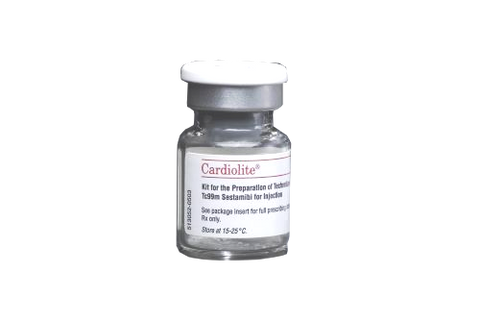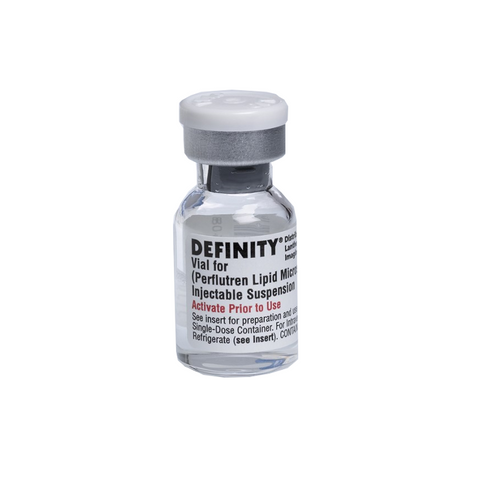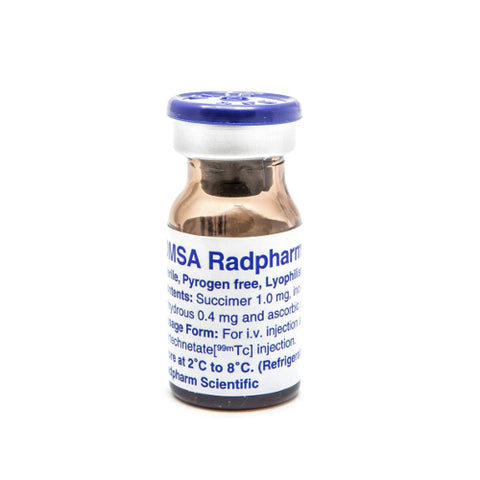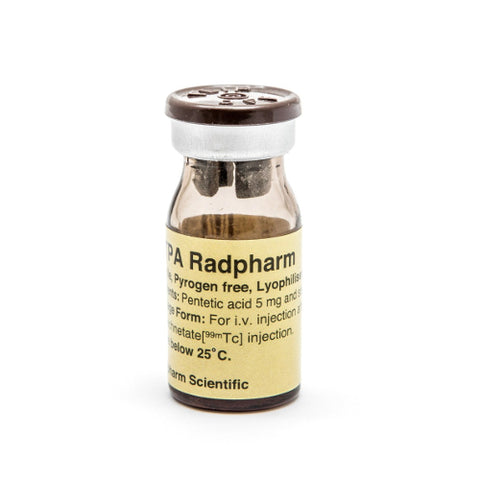- Home
- Catalogue
- Services
- Radiopharmacy
- Contact Us
- Sign in
Calcium Phytate Colloid Radpharm
PHY 1986/1
- DESCRIPTION
- CONTENTS & PRESENTATION
- CONTRAINDICATIONS
- EXTERNALRADIATION
- PHARMACOLOGY
- INDICATIONS
- CONTRAINDICATIONS
- PRECAUTIONS
- ADVERSE REACTIONS
- DOSAGE AND ADMINISTRATION
Kit for the Preparation of Technetium[99mTc] Calcium Phytate Colloid
Injection for Liver/Spleen Imaging.
The agent comprises sterile, pyrogen free lyophilised ingredients which
need reconstitution with sodium pertechnetate[99mTc] injection and addition
of Calcium Radpharm to produce a technetium[99mTc] calcium phytate colloid
suitable for liver/spleen imaging. The precise structure of the technetium[99mTc]
calcium phytate colloid is not known at this time. Technetium[99mTc] calcium phytate colloid is a diagnostic pharmaceutical administered by
intravenous injection.
This is a composite kit consisting of a PHYTATE Radpharm vial (lyophilised)
and a CALCIUM Radpharm vial (solution). PHYTATE Radpharm is supplied
as a carton of 5 sterile, pyrogen free, vacuum sealed 10 mL vials containing
23.4 mg phytic acid and 1.0 mg stannous chloride anhydrous as a lyophilised powder. CALCIUM Radpharm is supplied as a carton of 5 sterile, pyrogen
free 8 mL vials containing a 1.2 mL solution of 5 mg/mL potassium hydrogen phthalate and 13.7 mg/mL calcium chloride in Water for Injections BP. The
product contains no preservatives.
Technetium-99m with a physical half life of 6 hours decays by isomeric
transition to technetium-99. Photons associated with this transition that are
useful for detection and imaging studies are listed in Table 1.
Table 1. Principal Radiation Emission Data
| Principal Radiation | Mean % per Disintigration | Mean Energy (keV) |
| Gamma-2 | 89.1 | 140.5 |
Reference: D A Weber et al. "MIRD: Radionuclide Data and Decay Schemes", The Society of Nuclear Medicine Inc. New York, 1989.
Table 2. Physical Decay Chart for Technetium-99m
| Hours | Fraction Remaining | Hours | Fraction Remaining |
| 0 | 1.000 | 7 | 0.446 |
| 1 | 0.891 | 8 | 0.397 |
| 2 | 0.794 | 9 | 0.354 |
| 3 | 0.707 | 10 | 0.315 |
| 4 | 0.630 | 11 | 0.281 |
| 5 | 0.561 | 12 | 0.250 |
| 6 | 0.500 |
The specific gamma ray constant for technetium-99m is 0.19 mGy/MBq-h
at 1 cm. The first half value thickness of lead (Pb) for technetium-99m is
0.2 mm. Attenuation by lead is given in Table 3.
Table 3: Radiation Attenuation by Lead Shielding
| Shield Thickness mm (Pb) | Coefficient of Attenuation |
| 0.95 | 0.1 |
| 1.8 | 0.01 |
| 2.7 | 0.001 |
| 3.6 | 0.0001 |
The liver is an organ of the reticuloendothelial system and it consists of two
main cell types. The parenchymal (polyclonal) cells perform the metabolic functions and account for 85% of the cell population. The reticuloendothelial (Kupfer) cells, which are also present in the spleen and bone marrow, phagocytose foreign particles of colloidal dimensions. Radioactive colloids
are rapidly removed from the circulation by these cells. Any lesion that
displaces normal liver tissue will appear as a photopenic site as it does not
take up the radiocolloid.
Technetium [99mTc] calcium phytate colloid may be used as a liver/spleen imaging pharmaceutical for determining liver size and shape, and for investigation of a malignancy, infections, trauma and cirrhosis.
None known.
General
Radiopharmaceuticals should be used only by physicians who are qualified
by specific training in the safe use and handling of radionuclides.
Contents of the vial are intended only for use in the preparation of technetium [99mTc] calcium phytate colloid. The radioactivity of the dose should be
checked with a suitable instrument immediately prior to administration.
Disposal of all radioactive wastes should be carried out in accordance with
the NH & MRC "Code of Practice for the Disposal of Radioactive Wastes
by the User" (1985).
Use in Pregnancy
Technetium-99m radiopharmaceuticals should only be given to a pregnant woman if in the judgement of the treating physician the expected benefits outweigh the potential hazards.
Use During Lactation
Technetium-99m is excreted in human milk. Interruption to breast feeding
is not essential after the administration of technetium[99mTc] calcium
phytate colloid (a mother can be reassured by advising an interruption
of 4hr). (Reference: L.K. Harding, A. Bossuyt, S. Pellet, C. Reiners, J.N.
Talbot, "Recommendations for nuclear medicine physicians regarding breastfeeding", Eur.J.Nucl.Med., 1995, 22, BP17).
For each patient, exposure to ionising radiation must be justifiable on the
basis of likely benefit. The activity administered must be such that the
resulting dose is as low as reasonably achievable bearing in mind the need
to obtain the intended diagnostic or therapeutic result. Exposure to ionising
radiation is linked with cancer induction and a potential for development
of hereditary defects. For diagnostic nuclear medicine investigations the
current evidence suggests that these adverse effects will occur with low
frequency because of the low radiation doses incurred. For most diagnostic investigations using a nuclear medicine procedure the radiation dose
delivered (EDE) is less than 20 mSv. Higher doses may be justified in some
clinical circumstances. Adverse reactions have not been reported for this
product, to date.
Recommended intravenous dose for the normal adult is 120-160 MBq.
Related Items
Cardolite Sestamibi
Cardiolite® is a technetium-labeled single photon emission computed tomography (SPECT) myocardial perfusion imaging (MPI) agent used for identifying and managing patients with known or suspected... View full product details
Definity
DESCRIPTION Cardiolite® is a technetium-labeled single photon emission computed tomography (SPECT) myocardial perfusion imaging (MPI) agent used for identifying and managing patients with known or... View full product details
DMSA Radpharm
Radpharm DMSA consists of sterile, pyrogen free lyophilised ingredients which need reconstitution with sodium pertechnetate[99mTc] injection to produce a technetium[99mTc] succimer complex suitable for renal imaging.The... View full product details
DTPA Radpharm
Radpharm DTPA consists or sterile. pyrogen free,Jtapnmsed ingredients which need reconstitution with SOdium Pertecnnetate t"Tc) lfltCClion to produce a tectinetlum [IIIITl-rc) pentetate complex suital>te for renal imaging.... View full product details
Sign up to get the latest on sales, new releases and more …
© 2025 GMS Australia Pty Ltd.
PRODUCTS NOT AVAILABLE FOR PURCHASE BY THE GENERAL PUBLIC .ALWAYS READ THE LABEL AND FOLLOW THE DIRECTIONS FOR USE
Powered by Shopify



























